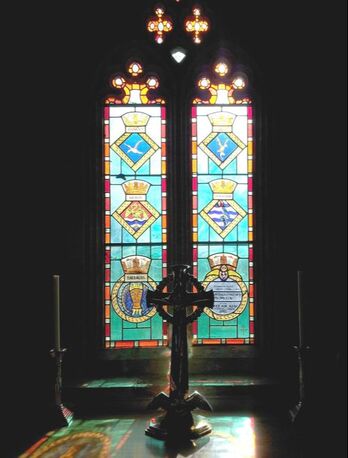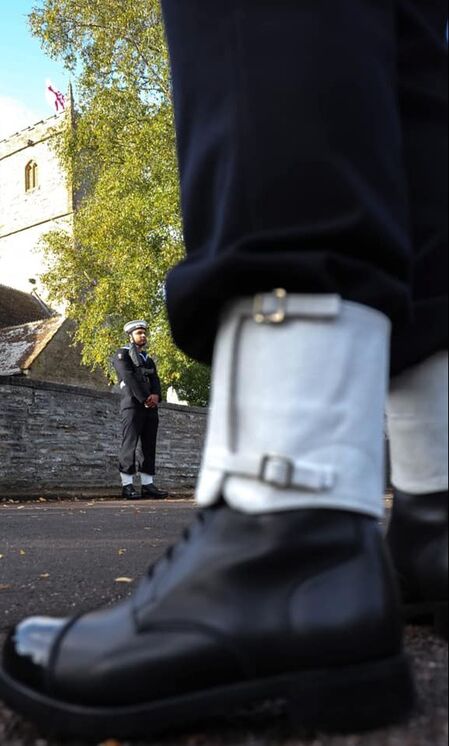From 900AD To The Present Day
To understand the full history of the church from its origins to the current day we have created a historical timeline explaining what happened at each decisive moment in history.
The History Of The Church
There has been a place of worship on this site since Saxon times, although architectural evidence places the foundations of the church in the Norman period. This Norman church stood intact until the early 1400s when an extensive fire destroyed most of the structure. Once again another church, which still stands today, was constructed from the ruins in the perpendicular style under the direction of Richard Swan the Rector at the time.
Despite all of the catastrophic damage some unusual original features are still visible, such as an ogee-headed piscina used to wash communion vessels dating from the 14th century and the remains of a Norman wafer oven. A three staged square tower was added around 1500 and now houses six bells. The earliest bell, known as the Maria Bell, predates the tower having been cast c. 1435 at the Exeter Bell foundry.
‘the church was awarded Grade II* Listed Building status, a designation that means it is particularly important and of more than special historical interest.’
Architecturally little appeared to change until the Victorians carried out major renovations works in 1872. They rebuilt most of the south side of the church, adding a small South Transept (now the side Chapel), relocating a Norman lintel, replacing the roof and some internal fittings.
On 19 April 1961 the church was awarded Grade II* Listed Building status, a designation that means it is particularly important and of more than special historical interest.
‘a whole new chapter in the life of the church was about to start …..’
Unfortunately in 1988, the Diocese of Bath and Wells announced that Saint Bartholomew’s was to be made redundant having fallen into a very bad state of repair. Recognising the link with the Air Station and the significance of the Royal Naval Cemetery behind it, they offered the church to the Ministry of Defence. This offer was declined as the costs of restoring the church were considered way beyond public funding. Later that year the church was closed and the process of emptying its contents began. However in a tragic twist of fate a whole new chapter in the life of the church was about to start …..
Despite all of the catastrophic damage some unusual original features are still visible, such as an ogee-headed piscina used to wash communion vessels dating from the 14th century and the remains of a Norman wafer oven. A three staged square tower was added around 1500 and now houses six bells. The earliest bell, known as the Maria Bell, predates the tower having been cast c. 1435 at the Exeter Bell foundry.
‘the church was awarded Grade II* Listed Building status, a designation that means it is particularly important and of more than special historical interest.’
Architecturally little appeared to change until the Victorians carried out major renovations works in 1872. They rebuilt most of the south side of the church, adding a small South Transept (now the side Chapel), relocating a Norman lintel, replacing the roof and some internal fittings.
On 19 April 1961 the church was awarded Grade II* Listed Building status, a designation that means it is particularly important and of more than special historical interest.
‘a whole new chapter in the life of the church was about to start …..’
Unfortunately in 1988, the Diocese of Bath and Wells announced that Saint Bartholomew’s was to be made redundant having fallen into a very bad state of repair. Recognising the link with the Air Station and the significance of the Royal Naval Cemetery behind it, they offered the church to the Ministry of Defence. This offer was declined as the costs of restoring the church were considered way beyond public funding. Later that year the church was closed and the process of emptying its contents began. However in a tragic twist of fate a whole new chapter in the life of the church was about to start …..
Saved For The Royal Navy
|
In early 1989, Lieutenant Commander John Timothy Eilis (always known as Tim) was flying on exchange service with the US Navy in California. A Cornishman from a large farming family, Tim had flown Sea King and Wasp helicopters from 1974 before moving on to fly Sea Harrier jets on the front line. A talented pilot, he was in the USA to carry out test flying and operational evaluation. On 8 May 1989, Tim tragically died in a mid-air collision, and his body was brought back to Somerset for burial in the Royal Naval Cemetery located behind St. Bartholomew’s Church. During his committal on 22 May, Air Station officials, including the Commanding Officer Captain Colin MacGregor and the Anglican Chaplain Reverend Richard Thomas, were dismayed to see the rapid deterioration of the church since its recent closure: masonry was already falling from the tower. They realised that without rescue the church would probably be demolished and the Royal Naval Cemetery would in the future be hidden behind any new development. In the words of Captain MacGregor, ‘Tim Ellis’ funeral was the catalyst which made Richard Thomas and I absolutely determined that this should not happen’.
|
Lieutenant Commander John Timothy Eilis
In a few short weeks, a plan was drawn up to save the church. A charitable Trust was formed to raise the money required to restore the building so that it could be used as the Fleet Air Arm Memorial Church and also as a replacement Anglican Church for the Air Station. The project captured the imagination and hearts of the worldwide Fleet Air Arm community and private benefactors. In an amazingly short space of time over £300,000 had been donated.
The church was sold to the Trust for just £1 and the mammoth task of undertaking a two-year extensive repair programme for Saint Bartholomew’s began. ‘The project captured the imagination and hearts of the worldwide Fleet Air Arm community' |
Rebirth And Renewal
|
Once the sale was agreed, the church and the churchyard were surveyed straightaway in order to formulate a programme of works. Almost all of the church interior had rising damp, vegetation growing in the tower and a significant part of the building structure was unsafe. During the next few years the entire church was stripped, repaired, treated to eradicate death watch beetle, redecorated and restored under the project management of Mr Frank Taylor. It was a massive undertaking financially and involved a huge amount of work by architects, skilled masons, builders, carpenters, electricians and other specialists. Traditional techniques and materials were used to conserve the building sympathetically and to comply with the Listed Planning Consents. Specially designed porch gates were fitted, manufactured at HMS DAEDALUS, emblazoned with ‘Fleet Air Arm Wings’.
Numerous new internal fittings including six magnificent chandeliers, also manufactured at HMS DAEDALUS, were hung from the Nave ceiling. Two Books of Benefactors kept in the side Chapel give the details of those who generously donated pieces of ecclesiastical furniture and religious items in preparation for the church to be bought back into use. One book also contains information on the distinctive kneelers and cushions used in the pews. ‘In 1993, the Church was officially rededicated as the Fleet Air Arm Memorial Church’ |
On Remembrance Day 1993, the church was rededicated as the Fleet Air Arm Memorial Church. Ongoing schemes continued though, with a new bell ringing floor installed in 2000. The original front steps were replaced with a sloped stone pathway soon afterwards. A glorious new stained glass East Window, named ‘Resurrection Light’, was custom made and installed by local craftsman John Yeo to celebrate the 2000 Millennium. In 2009 an incredibly rare medieval stone Mensa was raised from beneath the Chancel floor under the East Window. For the first time in nearly 500 years it saw daylight and once again serves as the altar, having survived destruction ordered by King Henry VIII during the English Reformation.
The Fleet Air Arm Memorial Church Trust strives to further enhance the church and its surroundings for the benefit of current and future generations.
The Fleet Air Arm Memorial Church Trust strives to further enhance the church and its surroundings for the benefit of current and future generations.
The Bells Of The Fleet Air Arm Church
The Bells were lovingly restored one by one in 1991






